Will better gear make you a better photographer?
You may have heard the phrase It's The Photographer, Not the Camera
, or maybe the more generic A bad workman always blames his tools
. These phrases are often used to indicate that buying a new camera (or other related gear) won't make you any better a photographer.
While this is true in many cases, there are also plenty of cases where buying better gear does result in better photos. In some cases buying new gear may be the only way to get a certain type of photo.
An extreme example of this is where professional photographer Chase Jarvis was asked to photograph a couple of shoots using a lego camera. Even though he cheated somewhat by also using a speedlight and a variable neutral density filter, you can see that the camera was definitely the weak link.
If you compare the photos Chase took in that video on the lego camera to the ones he took on the Olympus camera, you can see there is a massive difference in quality. Of course, you're probably not using a lego camera, but stepping up to a new piece of gear can bring a significant improvement in your photos, as well as enabling you to be more creative in your shots.
So let's look at some of the situations where It's the camera, not the Photographer
. I'll also include examples of how to work round the limitations of your equipment without having to upgrade your kit if possible.
Focus and operation speed
Most compact cameras can be quite slow, some have a noticeable shutter lag (the time between pressing the button and the actual photo being taken). This has improved quite a lot in recent years, though can still be a problem if you are trying to capture a peak action shot.
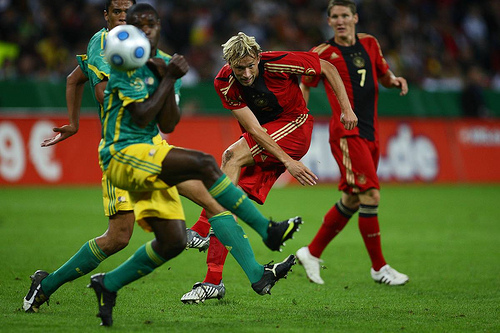
International friendly match by tpower1978 on flickr (licensed CC-BY)
Most more advanced cameras still have some shutter lag, but the delay is so small it doesn't make any difference.
Shutter lag can be worked around somewhat, so long as you know how long the lag is, then you can take this into account and press the shutter early. Still, you might miss some spontaneous shots that you wouldn't miss with a more advanced camera.
The autofocus speed of a camera or lens can be important as well, particularly when shooting fast moving action. Most compact cameras have quite slow autofocus. Again, this can be worked around somewhat by pre-focusing on a spot where you think the action will occur. But you will likely miss potential shots that occur elsewhere, that a more advanced camera or lens could have captured successfully.
Some cameras don't allow you to choose where you want to focus, or only have a limited selection of focus points. Instead you can use the focus-recompose technique. (Point the camera where you want to focus, half press the shutter to focus, recompose your original framing, then fully press the shutter to take the photo).
Although focus-recompose is good enough for most situations, in critical focus situations it will result in the focus being slightly off. See this article for a good illustrated explanation: How A Commonly-Used AF Technique Causes Focus Errors.
So sometimes a better camera can give you more control over autofocus, as well as faster and more accurate autofocus.
Background blur
If you want to take a photo with the subject in sharp focus, but a blurred background, this can be rather difficult with most compact cameras. The amount of blur in the background is related to the relative distance between you, the subject, and the background, the aperture of the lens, the size of the camera sensor, and the focal length.
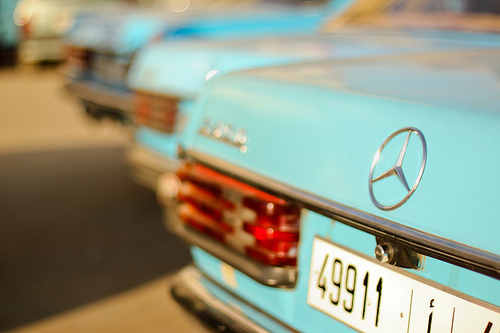
Grand Taxis Blue by geezaweezer on flickr (licensed CC-BY)
With a compact camera, they normally use quite small sensors. So getting an out of focus background can be difficult for anything other than close-up or macro shots. Using a longer focal length (zooming in) can help in some cases. This does not change how 'in focus' the background is, but does magnify it, so it may appear more blurred.
Buying a camera with a larger sensor, or a lens with a larger maximum aperture can help you get more out of focus backgrounds.
Long exposures
Long exposures can be used quite creatively, the most common uses are blurring moving clouds and blurring moving water. Unfortunately many compact cameras only have a longest shutter speed of something like 8 seconds. This is good enough for many purposes, but for some long exposures you may want a shutter speed of several minutes.
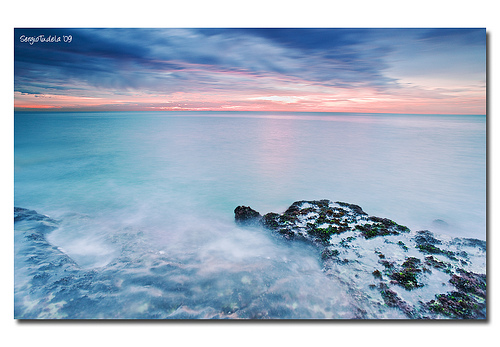
Dolphin by SergioTudela on flickr (licensed CC-BY)
For some applications (e.g. star trails) you can get round this by taking several shorter exposures. Then you can stack the photos together into one image using photo editing software.
However, this won't work for all applications, and in some cases a better camera that allows for longer exposure times is the only way you can get the photo you want. There can also be problems with the camera overexposing the image, which is difficult to correct if your camera does not allow the use of filters.
Use of filters
Most compact cameras do not have any way to attach filters to the lens. If you want to take a long exposure photograph of something while it is still light, you will need to use a neutral density filter to reduce the amount of light that the camera receives. This can be rather tricky if your camera does not accept filters.
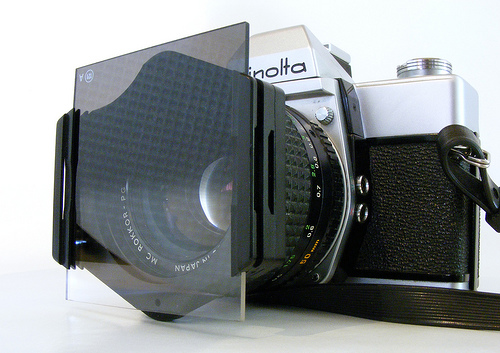
Minolta SRT 101 50mm F1.4 + Cokin A Filter Holder & Grad by Rob Nunn on flickr (licensed CC-BY)
And there are a great many other types of filters that can be put to good use for creative photography as well. In some cases you can just hold the filter in front of the lens if your camera doesn't accept filters.
But in other cases (e.g. long exposure photography) you are unlikely to be able to hold the filter steady in front of the lens for the whole exposure without causing some camera movement. (Even a small amount of camera movement can blur away detail and make an otherwise good image unusable).
So if you want to use filters and your camera doesn't have any way of attaching them, it could be time to upgrade. Make sure you check first though whether there are any attachments available for your current camera that make it so you can use filters. This is the case for some advanced compacts.
Low light
If you're shooting in low light levels a lot (or would like to), and you're not using a tripod, a better camera should help. Generally the main problem with shooting in low light is that you need to use a high ISO setting to get enough light for a fast shutter speed. (And so avoid blurry photos).
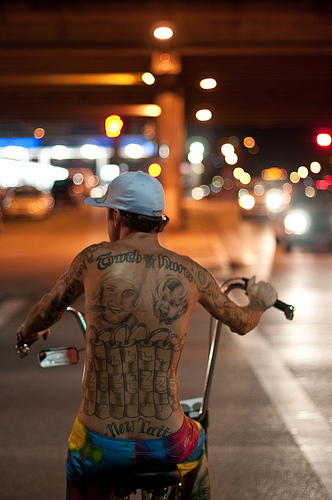
Tattooed Biker by christian.senger on flickr (licensed CC-BY-SA)
Some cameras don't offer a high enough ISO setting to get the shutter speed you need to avoid camera shake. And some offer a high enough setting but the resulting images are full of high ISO noise or detail smearing noise reduction.
As discussed in the article about avoiding blurry photos, one possible solution is to add more light by using a flash. But this isn't appropriate for all situations. The only other solution really is to use a better camera / lens.
As far as performance in low light goes, there are three things that affect how good the camera is:
- Sensor size
- How up to date the technology it uses is
- Maximum aperture of the lens
A larger image sensor collects more light, so all else being equal, it will produce less noise than a smaller image sensor.
Newer cameras use newer and better technology, and so can produce images with less high ISO noise. They also allow use of higher ISO values that were previously not available.
A faster lens (lens with a larger maximum aperture) can let through more light to the image sensor, and so allow for faster shutter speeds.
Many kit lenses bundled with DSLR cameras have a maximum aperture of around f/5.6 at 50mm. A 50mm lens with a maximum aperture of f/1.8 can be purchased relatively cheaply. This is a difference of 3⅓ stops, which is quite a big difference. For example if you needed to use a shutter speed of 1/8s with the kit lens, the f/1.8 lens would let you use a shutter speed of 1/80s under the same light at maximum aperture.
So, if you shoot handheld in low light conditions, upgrading your kit could make quite a noticeable difference to your images.
Keeping the camera steady
If you have a cheap tripod, you may find that it is not as steady as you need. Most cheap tripods will do okay for keeping the camera steady in good light, but try taking some photos at night on a windy day, and you'll notice the images come out blurry.
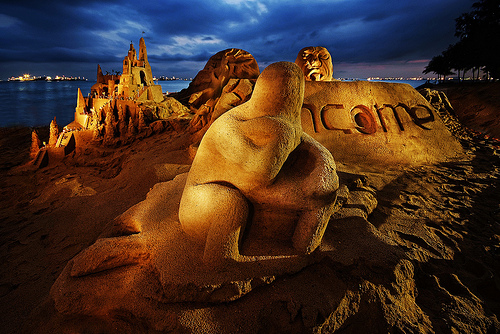
Castle Beach – Basic Light Painting with a Single Torch by williamcho on flickr (licensed CC-BY-SA)
Other problems with tripods can be difficult to adjust heads, sagging when you lock the head in position, and lack of stability.
Lack of stability is related partly to weight, and you may be able to weigh the tripod down to increase its stability.
For a sagging head, if you know how much the tripod head sags when you lock the head in position, then you might be able to learn to take this into account.
Still, a better tripod (and head) can make things much easier, and result in better photos.
Perspectives
The perspective of an image depends partly on where you are standing in relationship to the subject, and also the focal length of the lens you are using.
Many compact cameras don't feature wide-angle lenses. And the kit lenses bundled with most interchangeable lenses don't go particularly wide either. Both are wide enough for most purposes, but if you want to use a certain perspective, then you may need a wider focal length lens.
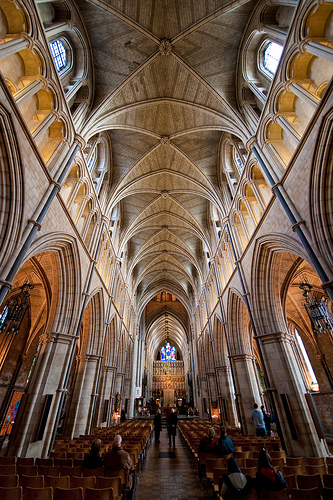
southwark cathedral by Matthias Rhomberg on flickr (licensed CC-BY)
Similarly, in some cases you may want the perspective offered by a longer focal length lens than what your current camera / lens offers.
If you can't fit a subject in the frame, and can't move further back either, you might need a wider lens. And if you need a subject larger in the frame, but can't get nearer, then you probably need a longer lens.
There are some things you can do about this without buying a completely new camera / lens. For a wide angle shot, you can take multiple photos and then stitch them together into a single image on the computer. Of course, this takes more time and work than taking a single image with a real wide angle lens though.
You can also purchase supplementary lenses for use with some cameras and lenses. This is an extra cost, but generally not as much as a new camera or lens. These are available as both wide angle adapters, and teleconverters to create a longer focal length. The results these adapters produce are not as good quality as a proper lens though.
Dynamic Range
Many compact cameras, particularly older models, have a limited dynamic range. You can see this if you keep getting images where the landscape is exposed correctly, but the sky is a washed out white. Or the sky may be exposed correctly, but then the landscape features patches of solid black with no detail.
Generally cameras with larger sensors, and also those using the most up to date technology have the largest dynamic range. For example, Nikon's latest camera, the full frame D800, has won great plaudits because of the large dynamic range it offers.
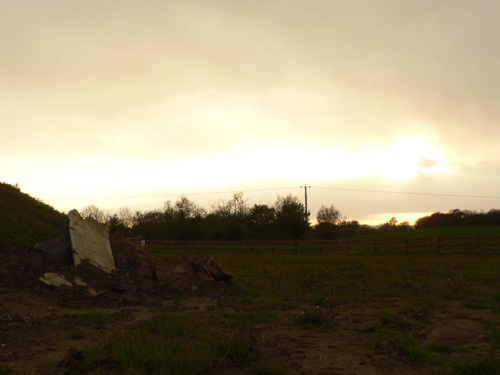
Example of dynamic range on camera with a small sensor
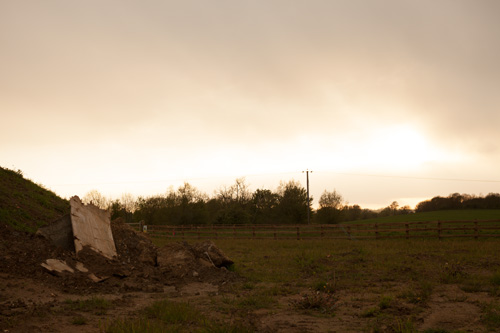
Example of dynamic range on camera with a large sensor
Comparing the two images above, you can see the highlight roll-off (transition between the brightest part of the highlight and the surrounding area) is much smoother in the photo taken with the camera that uses a larger sensor. This is because it has a larger dynamic range.
There are some things you can do to deal with a limited dynamic range on your current camera, though. If filters can be used with the camera, you can use a split neutral density filter, or otherwise you could use the black card technique. (Hold a piece of black card over the part of the image that needs to be darker for part of the exposure).
HDR imaging, where you take a number of shots with different exposures, and then combine the images into one photo can also be used.
But neither of these techniques is suitable for all occasions, and both involve extra work. If you are having problems with high dynamic range scenes, and the above solutions don't work well for you, then you could consider a new camera. Make sure that any new model you look at does have the dynamic range capabilities you need though.
Manual focus
Generally manual focus isn't one of those things we use much, or think about. But there are some situations where it can be useful. Low contrast subjects can be difficult for autofocus systems to lock on to, and in other cases AF systems can get confused and focus on the background instead of the subject.
You can fix this by focusing on something that is the same distance away as your subject, locking the focus, and then recomposing your shot. But this is not always possible.
If you have a camera that uses interchangeable lenses, you might have some lenses that don't use autofocus. So you have no choice other than to focus them manually.
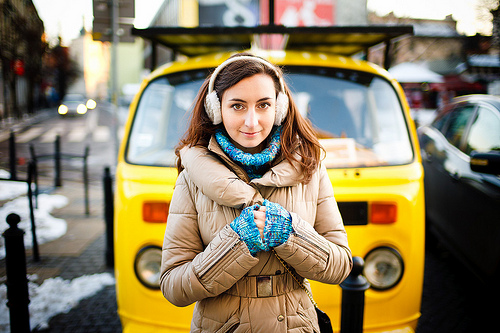
freska by Atheist_Lenses on flickr (licensed CC-BY)
So the ability to manual focus can be an issue for some people.
Most compact cameras don't offer manual focus at all. So if you need the ability to focus manually, you'll need to buy a different camera.
For DSLRs, there can be problems in manual focusing in that the focusing screens used in most optical viewfinders are not designed with manual focusing in mind. They can be very tricky to use for judging where the plane of sharp focus is placed. This is particularly true for lenses faster than f/2.8.
Some DSLRs feature interchangeable viewfinder focusing screens, so you can swap to a screen more suited for manual focus. Others don't, but you can pay to have the screen swapped out for a split screen design that makes manual focusing easier.
For cameras that use EVFs or the rear LCD screen, the ease of manual focusing comes down to features such as the screen resolution, focus peaking, and ease / speed of viewing a magnified image.
If you want to use manual focus, but your current camera makes it difficult, it might be worth looking at a new model that makes it easier.
Controlling the light
If you want to control the lighting on a portrait or product photo, but you only have a camera with a pop-up flash, you may well be limited by your camera.
In some cases, you may be able to position your subject, and use natural light and reflectors to get exactly the image you're after. But in other cases you may really be limited by a lack of lighting equipment.
If you take a look at this video, they are attempting to show that equipment is not important for great portrait photos, by doing a fashion shoot with an iPhone:
Now, the video does partly make its point - the knowledge of the photographer and how he directs the model certainly contribute strongly to the final images. So it isn't just about the gear. But the images certainly wouldn't look as good without the studio lighting set up.
Having said that, don't be tricked into thinking you need a full expensive studio setup for well lit images. If you find you can't light your photos as you like at the moment, do some reading on lighting. Then you should have a better idea of what you need.
As I said at the start of the article, most of the time it is the photographer, and not the camera that needs upgrading for better images. (Upgrade yourself through learning and practice!) But there are plenty of situations where the camera (or other equipment) is the limiting factor.
So if you find your shots aren't coming out how you envisioned them, don't feel the problem is always you. Just look at the situation objectively and you should be able to figure out whether the limiting factor is you or the camera.




